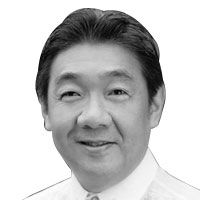Positive carry steadies the Philippine peso

Higher-yielding emerging market (EM) currencies, including the Philippine peso, have stabilized after the Fed paused its hiking cycle and the ECB indicated that it might restart QE. Encouraged by the increasingly dovish global central banks, investors looking for yield have flocked to emerging markets to profit from “carry trades.”
What is a carry trade?
A carry trade is a popular trading strategy used by currency traders. It involves buying a high-yielding currency by funding it with a low-yielding currency. The trader then attempts to profit from the difference between the rates.
The most common funding currencies are the yen, the euro, and the US dollar due to the aggressive monetary stimulus of their respective central banks in recent years which resulted in low-interest rates. Traders typically borrow these low-yielding currencies to fund investments in higher-yielding assets such as emerging market currencies and bonds. This transaction creates a “positive carry” because of the differential in interest rates.
The EM carry trade
EM currencies and bonds are favorite targets of carry traders because EM assets offer significantly higher yields than similar assets of developing countries. In Asia for example, the one-year Indonesian T-bill rate stands at 6.575 percent, while the Philippines’ is at 6.1 percent. In other EM countries, Russia’s one-year T-bill rate is 7.56 percent, while Turkey’s is at 21.85 percent. In contrast, the one-year US T-bill rate is at 2.45 percent, while German and Japanese government one-year yields are below zero.
Fed pauses
Expectations that the Fed is unlikely to raise rates at all this year have made EM carry trades even more appealing. During the Federal Open Market Committee (FOMC) meeting last March, the Fed declared that their policy direction had hit “neutral” given the slowing global growth and sub-par inflation. The Fed also announced that it would end the reduction in its balance sheet in September of this year.
The dovish central bank actions, together with the subdued forex market volatility are conducive to investors playing the carry trade. The relatively calm forex market has allowed investors to profit from the interest differential while minimizing losses from currency fluctuations.
EM currencies sustain gains
Buoyed by the carry trade, many EM currencies have maintained their gains since bottoming out against the US dollar in 4Q2018. In Asia, the top performing currency so far this year is the Chinese yuan, up +2.5 percent year-to-date and +3.9 percent since bottoming out in 4Q2018.The next best currency performers are the Indonesian rupiah and the Philippine peso, which are up 2.4 percent and 1.6 percent year-to-date, respectively.
Among other EM currencies, the Russian ruble is tops with a 7.8 percent gain year-to-date, followed by the Chilean peso’s +4.6 percent.
Performance of select Asian and EM currencies vs the US dollar

Source: Bloomberg, Wealth Securities Research
Risks in a carry trade
The most significant risk in a carry trade is the uncertainty of exchange rates. While a carry trade may seem like a straightforward “buy high-yielding currency/sell low-yielding currency,” the gains from the rate differential may easily be wiped out by a depreciation in the asset currency bought. In the case of the Turkish lira, for example, the sharp depreciation of -9.7 percent year-to-date offsets the high yields offered.
Rate cut diminishes carry trade attractiveness
An interest rate cut or a reduction in RRR (banks’ reserve requirement ratio) may lessen the attractiveness of the carry trade. BSP Governor Benjamin Diokno recently indicated that a rate cut would be considered at the next Monetary Board meeting in May now that inflation is under control. However, he added that the board would also take into account the effect of El Niño and the recent uptick in oil prices when they make their decision. BSP further said that they remain on a cautious stance and shall consider all relevant information to ensure their its policies are consistent with their primary mandate of price stability.
Phl peso: Neutral to bullish
In a previous article (see Divergent views on the peso, Feb. 18), we noted the drop in the volatility of the USD/PHP rate. Since November 2018, the movement of the peso has been steady and trading within a narrow range. This price action is in contrast to the outlook of many houses. Based on the chart below, technical analysis points to the peso ranging between 51.50 and 53.50. A break below 51.50, however, would lead to a possible move towards the 50-level.

Source: Tradingview, Wealth Securities Research
Philequity Management is the fund manager of the leading mutual funds in the Philippines. Visit www.philequity.net to learn more about Philequity’s managed funds or to view previous articles. For inquiries or to send feedback, please call (02) 689-8080 or email [email protected].
- Latest
- Trending




























